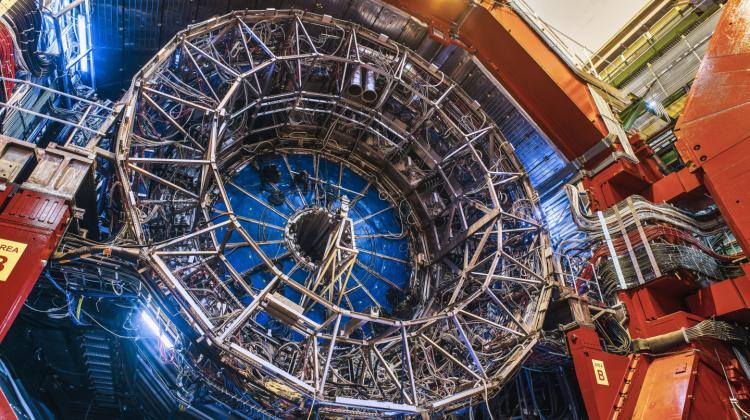ALICE collaboration opens avenue for high-precision studies of the strong force
The international the ALICE experiment at the Large Hadron Collider has published conclusions from the results of its research in the prestigious scientific journal “Nature”. Among the people involved in this project are also scientists related to PR High Energy Physics and Experimental Techniques.
Join special "Nature" seminar "ALICE collaboration opens avenue for high-precision studies of the strong force" by Łukasz Graczykowski, Ph.D. (December 15 at 2 p.m.) >>>
Hadrons interact via a residual strong force that is unmeasured for most hadron species.
The measurement and quantitative understanding of the strong interaction among hadrons is considered to be one of the frontiers within the standard model of nuclear and particle physics.
Scattering experiments and spectroscopy studies of stable and unstable nuclei allowed us to quantify the residual nuclear force among nucleons rather precisely, but for unstable hadrons as baryons containing strange quarks (hyperons), such measurements are extremely difficult.
The ALICE collaboration recently demonstrated that by combining excellent particle identification and a momentum correlation analysis method applied to pp, p-Pb, and Pb-Pb collisions at the LHC, it is possible to measure the strong interaction among all hadrons containing strange quarks and protons.
The case in point discussed in the recent publication by ALICE concerns the correlation between a proton and the rarest of hyperons: the Omega(sss).
The precisely measured proton-Omega correlation clearly evidences an attractive strong interaction among the two hadrons.
These measurements open a new avenue in nuclear physics, with the potential of accessing the strong force between any hadron pair.
You can find out more about the research from the article on the “Nature” and CERN website.
Co-authors of publication from the Warsaw University of Technology:
Daniel Dąbrowski, M.Sc., Kamil Deja, M.Sc., Łukasz Graczykowski, Ph.D., Rihan Haque, Ph.D., Monika Jakubowska, Ph.D., Małgorzata Janik, Ph.D., Przemysław Karczmarczyk, M.Sc., Adam Kisiel, Prof. Ph.D., D.Sc., Georgy Kornakov, Ph.D. Julian Myrcha, M.Sc., Łukasz Neumann, M.Sc., Piotr Nowakowski, M.Sc., Janusz Oleniacz, Ph.D., Przemysław Rokita, Prof. Ph.D., D.Sc., Krystian Rosłon, M.Sc., Tomasz Trzciński, Ph.D., D.Sc., Hanna Zbroszczyk, Prof. Ph.D., D.Sc.


